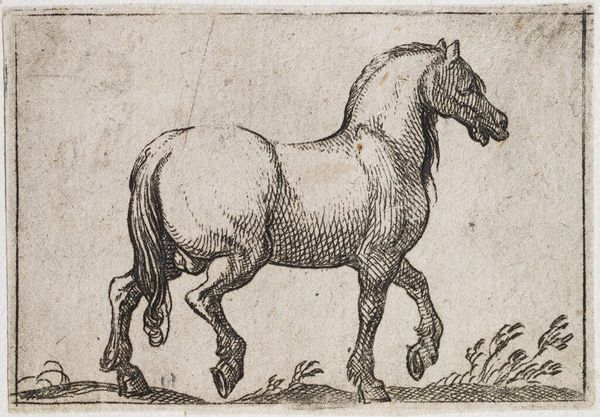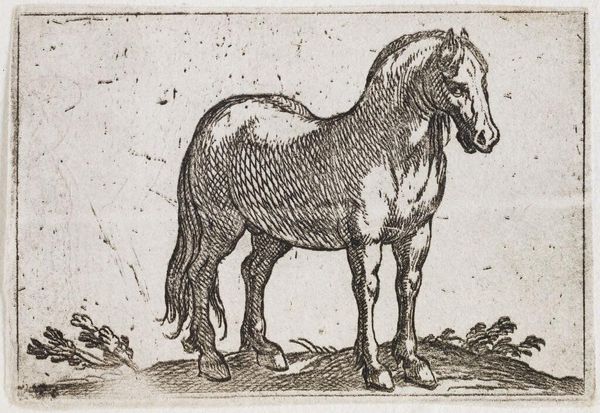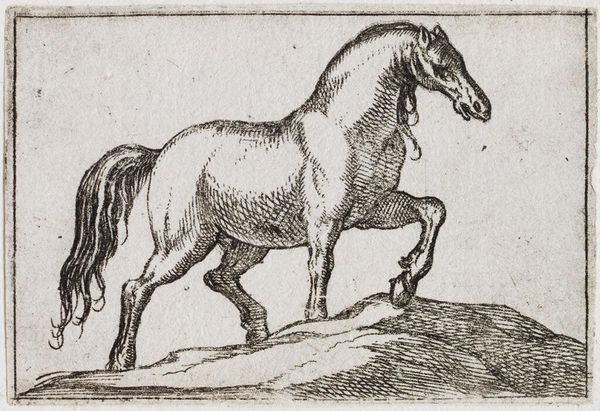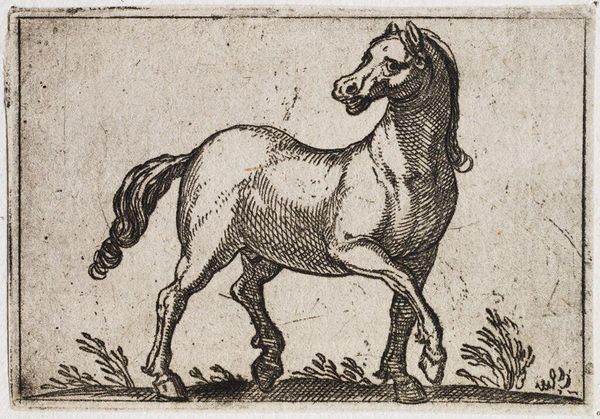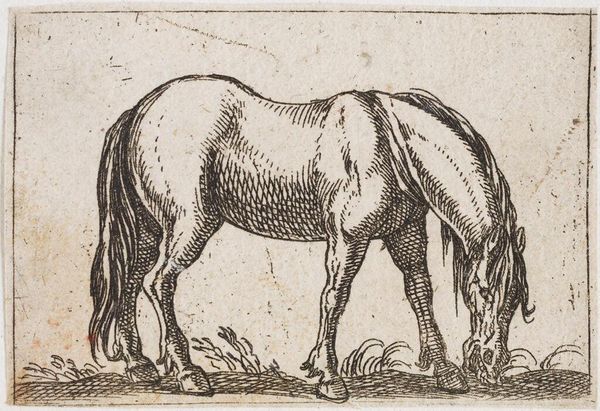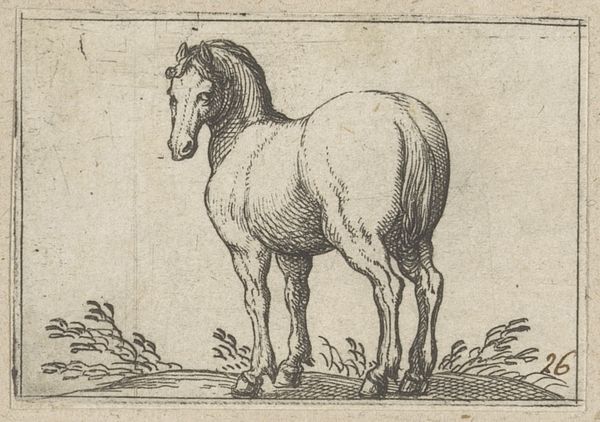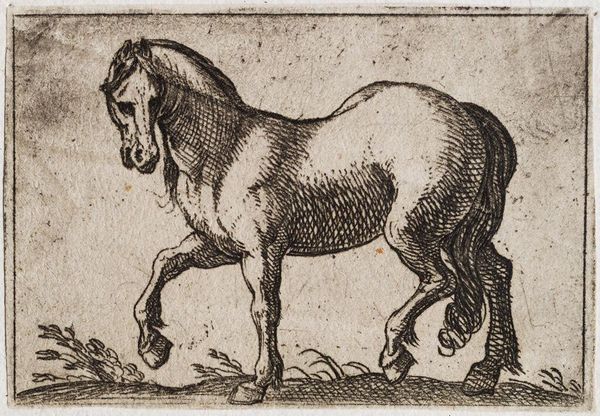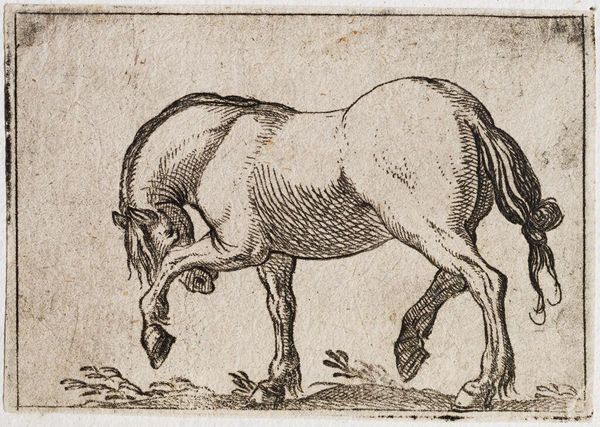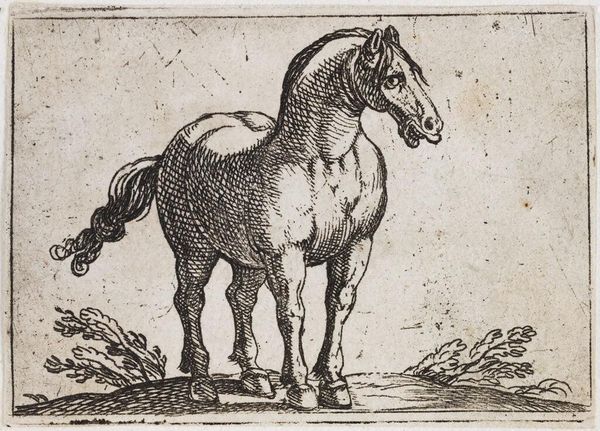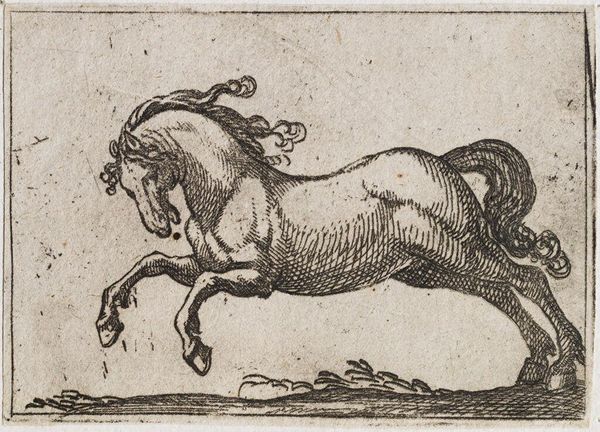
Copyright: CC0 1.0
Curator: This is "Standing Horse Viewed from the Rear," an etching by Antonio Tempesta, who lived from 1555 to 1630. Editor: It’s deceptively simple. I'm immediately struck by the horse's presence, its calm strength rendered with such delicate lines. Curator: Tempesta was known for his dynamic battle scenes, often reflecting the political and religious conflicts of his time. This lone horse could symbolize power, or perhaps the burdens of leadership. Editor: Given the medium, it speaks to the accessibility of art during the period. Etchings allowed for wider distribution, shifting art's consumption beyond elite circles, making it more communal. Curator: Indeed, and examining the horse's pose could offer insights into 16th-century perspectives on animals, class structures, and societal expectations. Editor: Ultimately, it reminds us how artistic techniques can democratize imagery, influencing wider audiences and engaging in conversations about social norms. Curator: A reminder that even seemingly straightforward images are steeped in complex cultural history. Editor: Leaving us much to contemplate about the tools of creation and the messages they spread.
Comments
No comments
Be the first to comment and join the conversation on the ultimate creative platform.

